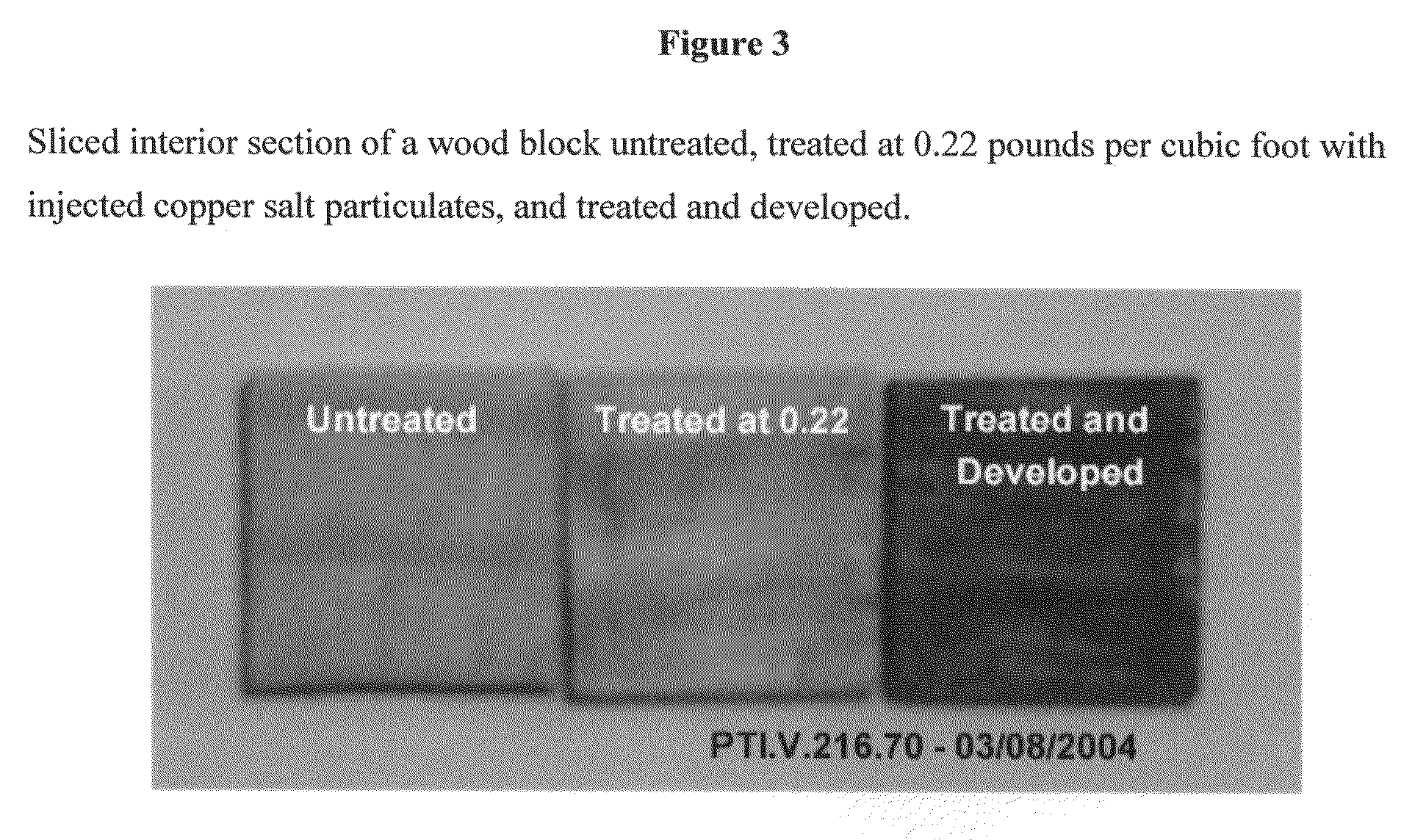Particulate wood preservative and method for producing the same
a preservative and wood technology, applied in the field of wood preservatives, can solve the problems of wood deterioration, unnatural color, oily surface, etc., and achieve the effects of low cost, low cost, and low production cos
- Summary
- Abstract
- Description
- Claims
- Application Information
AI Technical Summary
Benefits of technology
Problems solved by technology
Method used
Image
Examples
examples
[0229]We have successfully injected slurries comprising sub-micron-sized particles of various sparingly soluble copper salts into standard 1 inch cubes of Southern yellow pine. Copper development by calorimetric agents (dithio-oxamide / ammonia) showed the copper to be fully penetrated across the block in the sapwood portion. FIG. 3 shows the penetration of injected particulate copper hydroxide developed with dithio-oxamide in the third picture. The stain corresponds to copper. Subsequent acid leaching and quantitative analysis of the copper from two blocks showed that loadings of 95% and 104% of expectation, or essentially 100% average of expectation had occurred. At 100% loading, values of 0.22 lbs of copper per cubic foot would be obtained.
[0230][Leaching data from wood preserved with a prior art soluble solution of copper MEA and from a slurry of injected copper hydroxide particulates of this invention was measured following the AWPA Standard Method E11-97. The total copper leache...
PUM
| Property | Measurement | Unit |
|---|---|---|
| diameter | aaaaa | aaaaa |
| diameter | aaaaa | aaaaa |
| diameter | aaaaa | aaaaa |
Abstract
Description
Claims
Application Information
 Login to View More
Login to View More - R&D
- Intellectual Property
- Life Sciences
- Materials
- Tech Scout
- Unparalleled Data Quality
- Higher Quality Content
- 60% Fewer Hallucinations
Browse by: Latest US Patents, China's latest patents, Technical Efficacy Thesaurus, Application Domain, Technology Topic, Popular Technical Reports.
© 2025 PatSnap. All rights reserved.Legal|Privacy policy|Modern Slavery Act Transparency Statement|Sitemap|About US| Contact US: help@patsnap.com



